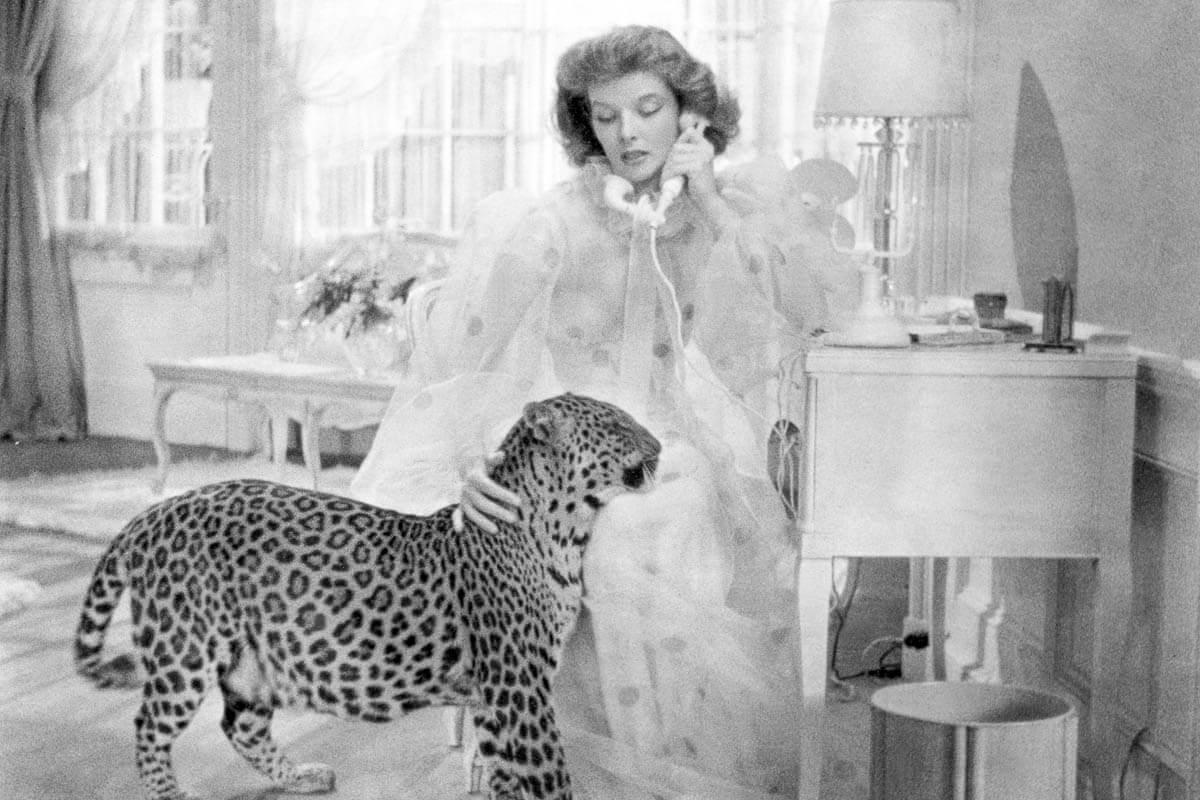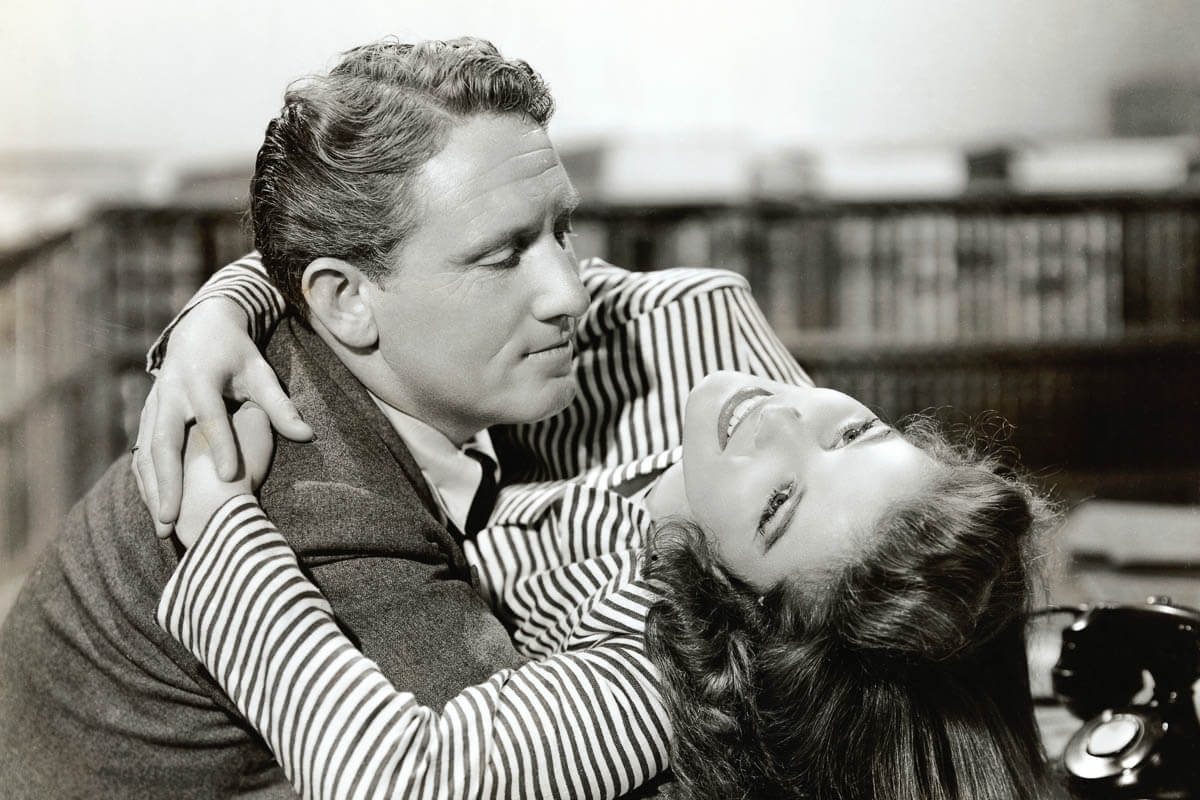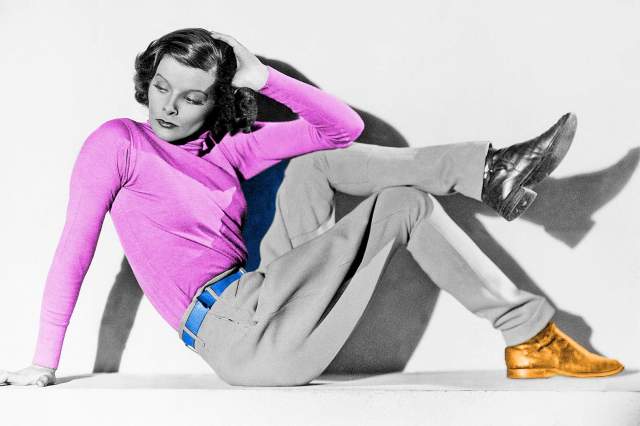
Hepburn’s Stage Career Got Off to a Rough Start
Fresh out of Bryn Mawr College in the late 1920s, the ambitious but unrefined actress struggled to hold on to several of the stage roles she relentlessly pursued. She was fired from productions of The Big Pond, Death Takes a Holiday, and The Animal Kingdom, and was briefly replaced before delivering a breakout performance in 1932’s The Warrior’s Husband. Even after making a successful leap to Hollywood with celebrated turns in 1933’s Morning Glory and Little Women, Hepburn was humbled by a widely panned return to Broadway that year in The Lake, and bought out her contract to avoid the embarrassment of continuing with the production on tour.

Hepburn Endured a Close Call With the Leopard of “Bringing Up Baby”
Hepburn spent several scenes with a dangerous co-star in 1938’s Bringing Up Baby, and it wasn’t Cary Grant. She initially got along pretty well with Nissa the leopard — the titular “Baby” of the screwball comedy — who enjoyed nuzzling his head into Hepburn’s perfume-laden negligee. However, a leopard never changes its spots, and something in its primal brain was triggered when the leading lady changed to a dress weighted with metal pieces to enhance its swirling capabilities. As she recalled in her memoir Me: Stories of My Life: “[O]ne quick swirl and that leopard made a spring for my back, and [the trainer] brought that whip down right on his head. That was the end of my freedom with the leopard.”

The A-Lister Was an Excellent Athlete
Raised by parents who encouraged the athletic development of their children and provided the financial means for doing so, Hepburn and her siblings engaged in a wide array of sports while growing up. She was particularly adept at golf, thanks to the private lessons she received as a teenager, and more than held her own in high-level competitions before pursuing her acting career. Hepburn also was known for her daily workouts on the tennis court by the time she was an A-list star, and continued to play regularly into her 80s. Fans can watch the screen great show off her natural skills in both sports in the 1952 comedy Pat and Mike.
More Interesting Reads

Hepburn Enjoyed Instant Chemistry With Longtime Co-Star and Lover Spencer Tracy
Upon meeting 5-foot-9 Spencer Tracy shortly before they were to begin shooting 1942’s Woman of the Year together, the 5-foot-7 Hepburn remarked that she would refrain from wearing high heels in his presence. Tracy soon had his revenge: After Hepburn knocked over a glass of water during an early take, Tracy continued with his lines while handing her a handkerchief, essentially forcing her to wipe up the mess while in character. It was that sort of spirited interaction that fueled their unparalleled screen chemistry over nine films, as well as their open-secret, real-life romance, which endured from their first production until his death in 1967.

She Performed Her Own Stunts
It wasn’t quite Jackie Chan territory, but Hepburn insisted on doing her own stunts to preserve the authenticity of her shoots. Yes, that’s her dangling from Grant’s grasp off the scaffold at the end of Bringing Up Baby, and that’s her tumbling into an unsanitary Venetian canal in Summertime (1955). Furthermore, advancing years did little to dampen her enthusiasm for such exertion: She endured horseback rides across treacherous terrain for Rooster Cogburn (1975), less than a year after undergoing hip surgery, and insisted on doing her own dives into frigid waters for On Golden Pond (1981), a few weeks after having an operation for a separated shoulder.

Hepburn Won a Slew of Awards Later in Her Career
For all her early successes in films like Morning Glory and The Philadelphia Story, Hepburn didn’t fully hit her stride until reaching an age when many actresses struggle to land quality roles. She received the bulk of her 12 Academy Award nominations after age 40, and three of her record four Oscar wins after turning 60. Additionally, Hepburn picked up the first of her two Tony nominations just before turning 63, and claimed her lone Emmy five years later. It was partly due to that record of longevity, and her embrace of both the joys and vulnerabilities of aging in her performances, that inspired the American Film Institute to name her the top female screen star of all time.











